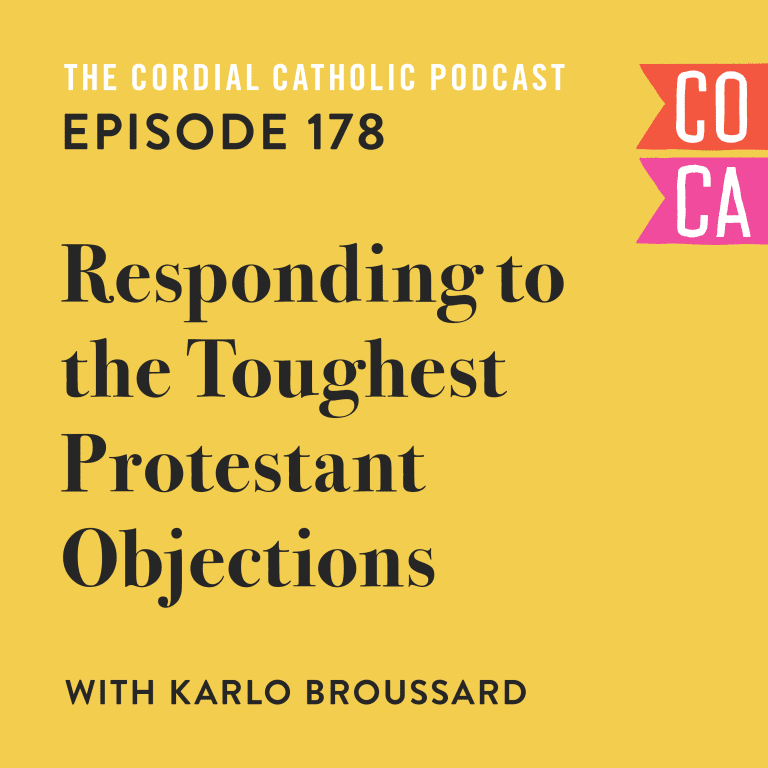
Lately, I’ve become enamoured with St. Thomas Aquinas.
After reading G.K. Chesterton’s biography of the medieval philosopher and theologian I’ve been exploring everything I can get my hands on that has to do with the saint. He’s a fascinating, towering figure in the history of theology, philosophy, and in the life and development of the Church but it’s his interesting approach to arguing that I’ve become especially interested in.
See, Aquinas was famous—infamous in the eyes of his detractors—for his uncanny ability to argue the other side.
To, in fact, articulate what his philosophical or theological opponents believed better than they could.
This approach is called steelmanning and is fairly straight-forward. Instead of setting up the weakest possible version of an opponent’s point-of-view—this is called a strawman—you argue for the strongest, best, most well-developed version you can think of. So, instead of being able to “take down” your opponent’s flimsiest argument you’re well-equipped to argue against their strongest, most fortified position instead.
It’s brilliant, and it’s what St. Thomas Aquinas did best. He was renown, in fact, for being able to argue a position against his own that was stronger than even his opponents could do. In other words, he was his own best opponent.
It would make for some interesting debates.
As Catholics living the 21st century we’re a long, long way from the culture of debate and discourse that predominated Aquinas’s time. Instead of a society ruled by the ability to see things through rationally, to argue and reason our way through to conclusions, as Aquinas was so well-equipped to do, we live in a kind of strange post-truth malaise. We are rational beings swimming in a sea of relativism.
The clear, straight-forward philosophical conclusions that St. Thomas made are, sadly, not going to be as convincing to everyone as they ought to be. Instead, emotions and lived experiences dominate the decisions and belief systems of many of our peers these days. The sharp, rationalism of Aquinas has decidedly taken a back seat but the wisdom of St. Thomas as well as his brilliant style of discourse has lost nothing of it’s value. In fact, now maybe more than ever, we as Catholics are in desperate need of some wisdom from the so-called Angelic Doctor.
So how do we apply the wisdom of St. Thomas’s ability to argue the other side? And why should we?
In a culture dominated by emotion and experience (over and above rationalism and reason) understanding a person’s lived experience helps us to empathize with their positions and perspectives.
As a Catholic, I believe strongly in the rights of unborn children but my friend, the abortion rights activist, feels very differently. In the spirit of St. Thomas, it’s my job to dig deeply into my friend’s belief system; to ask probing and honest questions about why they believe what they believe not in order to attack their position or to tear down their point-of-view but, first and foremost, to understand.
Remember, St. Thomas could articulate his opponent’s positions so well because he, first, bothered to learn them—and learn them deeply. Then, and only then, can we begin to speak to those that belief differently than us from a place of greater understanding and empathy.
This is key.
The success of Aquinas in so succinctly articulating his faith—and make no mistake, his influence in world religion is virtually unmatched—was his ability to articulate the other side as well. Aquinas knew the stuff of his Christianity but, in turn, knew it even better and more deeply because he knew why he didn’t believe something else.
In real life application, I should know not only why I’m Catholic but why I’m not a Mormon, for example, instead. We, like St. Thomas Aquinas, need to be able to articulate and understand the other side first so that with empathy and insight we can explain our own faith well.
After all, we’re told that Jesus ate with prostitutes, tax collectors, and outcasts of society and never once do we see him giving them an insipid lecture, arguing frivolously, or scolding them without cause. Instead, like St. Thomas Aquinas, Jesus seems to walk along side these various sinners to first empathize with the conditions of their lives, to first understand, before inviting them deeper.












